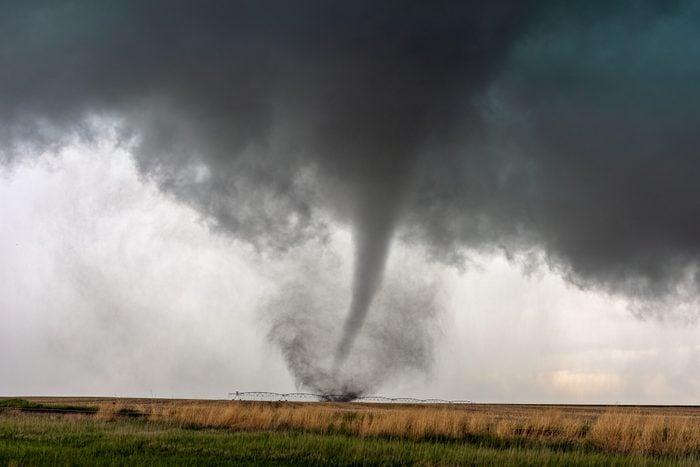
Tornado safety tips
Tornadoes are among the most dangerous natural disasters—and you never know where or when they might strike. In 2021, tornadoes killed more than 100 people, including about 90 in a series of tornadoes in the United States in December. Since twisters typically hit in the spring, the December 2021 tornadoes were yet another sign that these natural disasters are becoming more frequent, destructive and deadly. That’s why everyone should know how to prepare for a tornado, no matter where they live or what time of year it is, according to experts.
“Tornadoes don’t just occur in the Midwest and Deep South,” says Stephanie Fox, a spokesperson for the American Red Cross. “In reality, tornadoes can happen anywhere conditions are right, and even during the winter.” They form in severe weather like thunderstorms, when cool and warm air collide.
To help you protect your family and your home, we’re sharing expert-approved tips for how to prepare for a tornado, from understanding when danger is imminent to what to do when the power goes out. When you’re fully prepped, learn the answers to your other natural disaster-related questions, including how to prepare for a hurricane, what a wildfire is and how to help after a natural disaster.

Get Reader’s Digest’s Read Up newsletter for more helpful tips, tech, travel, humor, cleaning and fun facts all week long.
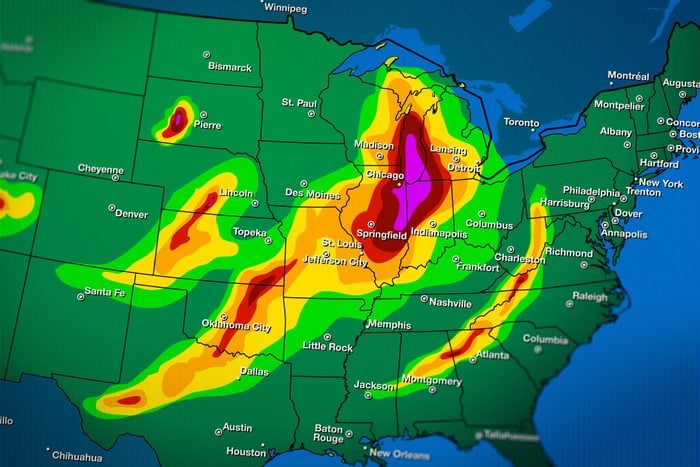
Know the terms
Do you know the difference between a tornado watch and a tornado warning? Study up before the next thunderstorm hits. If a tornado watch is issued, you should stay on the alert and prepare to hunker down, because the weather may deteriorate quickly. Watch areas typically cover a wide area and may apply to multiple counties or even several states at the same time, Fox notes.
A tornado warning, on the other hand, means a tornado has been spotted or Doppler radar has found that a tornado is present or could form at any time. In other words, “danger is imminent,” Fox says. “A warning should trigger you to immediately seek shelter and take action to keep you and your family safe.” When the NOAA meteorologists issue a tornado watch or warning, you will receive a notification via alerts on your phone. You should also tune in to your local TV or radio news station for the latest information.
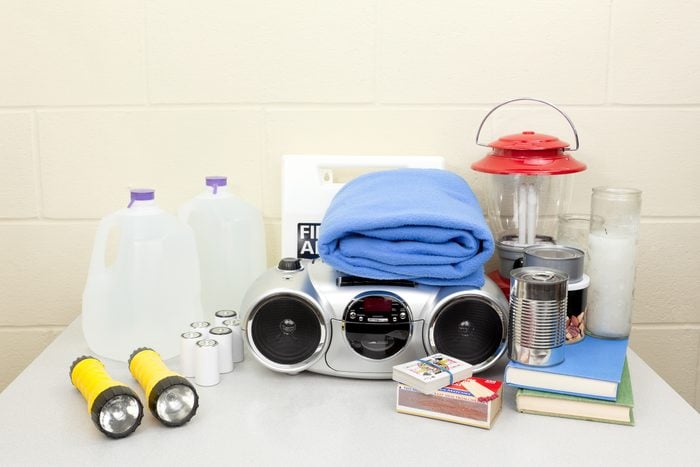
Put together an emergency kit
Keeping an emergency supply kit in your car and home is another essential way you can prepare before a tornado—or any natural disaster—strikes. Whether you build your own home emergency kit or purchase one online, it should include supplies like a first-aid kit, water bottles, nonperishable food, copies of important documents, prescription medication and cash, Fox says.
The CDC recommends stocking up on enough supplies to last at least three days, just in case emergency services can’t reach you immediately after the storm. Keep your emergency kit in a spot that is easily accessible, such as a closet or cabinet, so you can grab it before taking shelter.
If your power goes out, here’s a handy trick for determining if your food went bad. In general, though, this is how long your food will last in the fridge without power.
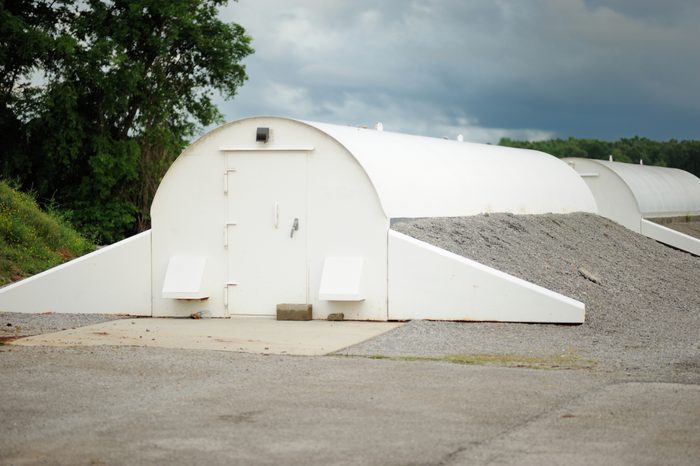
Identify where to seek shelter
If you live in one of the states most prone to natural disasters like tornadoes, scope out the safe spots in your house to hide in case of emergency. “Although there is no completely safe place during a tornado, some locations are safer than others,” according to the CDC’s National Center for Environmental Health (NCEH).
The NCEH recommends seeking shelter in a storm cellar, basement or any interior, windowless room on the lowest floor of your house such as a closet or center hallway. “The goal is to put as many walls between you and the outside world as possible, to prevent injury from flying debris,” Fox says. A bathtub is another safe place to take cover during a tornado—as long as it is located in an inside room, without windows and on the lowest floor, according to the NCEH. However, contrary to popular belief, it is not safer than any other bottom-floor, windowless room. Learn how to build a tornado-safe room.
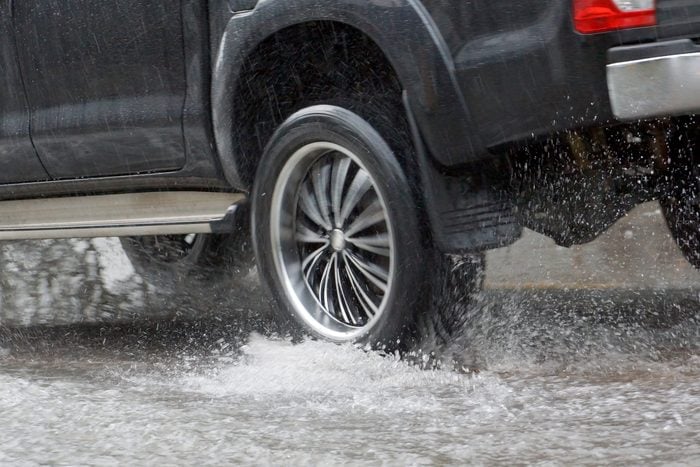
Know what to do if you’re on the road
If you are on the road when a tornado warning is issued and are not near shelter, Fox advises pulling over and parking. With your seat belt on and engine running, put your head down below the windows and cover your head with your hands and a blanket to protect yourself from glass and other flying debris. You can also find a ditch or other low-lying area that will protect you from debris, then lie down and cover your head with your hands. Avoid areas with trees, and do not seek shelter underneath a highway overpass or bridge, where strong winds could create a wind tunnel and carry debris traveling at a very high speed toward you, Fox says.

Download weather alert apps
You should have at least two ways to receive weather and emergency alerts. Some options: tuning in to your local television station, listening to a battery-powered NOAA weather radio and installing weather apps that send alerts to your phone based on your zip code. “Advanced warning and swift action can mean the difference between life and death” in a tornado, Fox says.
Fox suggests downloading the free Red Cross Emergency app for real-time weather alerts, nearby Red Cross shelter locations and expert advice on tornadoes. You can find it in Apple or Google Play app stores, go to redcross.org/apps or text GETEMERGENCY to 90999.
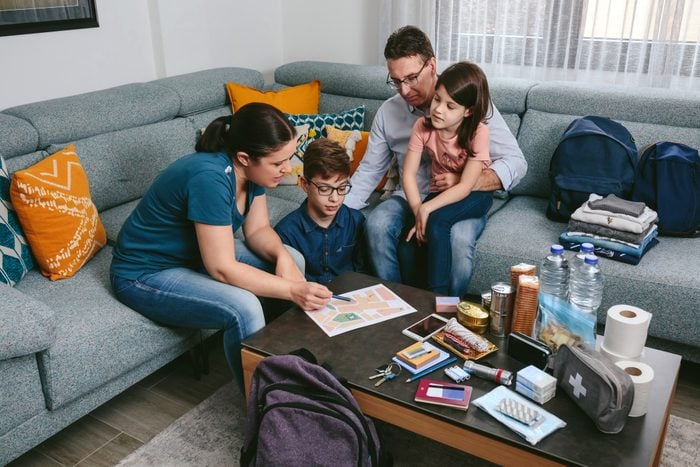
Create and practice your emergency plan
Take it from natural disaster survivors: Preparing for the worst is one of the best ways to stay safe. That includes creating and practicing an emergency plan to teach household members, including children, how to prepare for a tornado and other weather-related events.
Make sure to share key information on tornado safety, including:
- Signs of a tornado
- What tornado watches and warnings are
- The tornado warning system in your area
- The emergency dismissal policy for your child’s school
- The best places in your home to take shelter, and multiple ways to access them
- Where the fire extinguisher and first-aid kit are located, and how to use them
- What to do once the tornado has passed
Once you have a plan, the CDC advises conducting drills to practice responding to a tornado warning, including taking shelter and locating first-aid and other emergency equipment. And don’t forget about your pets. You should keep them close during severe weather, as well as include them in your practice sessions.

Check on your neighbors
In addition to creating an emergency plan for your own household, take the time to confirm that elderly or disabled neighbors have ways to receive emergency information and know where they might seek shelter during a tornado too. “If mobility is a concern, they may need additional assistance from friends and family who are close by,” Fox says. The CDC recommends writing down their needs, limitations, capabilities and medications, and asking them for a spare key to their home or directions to find a key. Keep the list and spare key in your emergency kit.
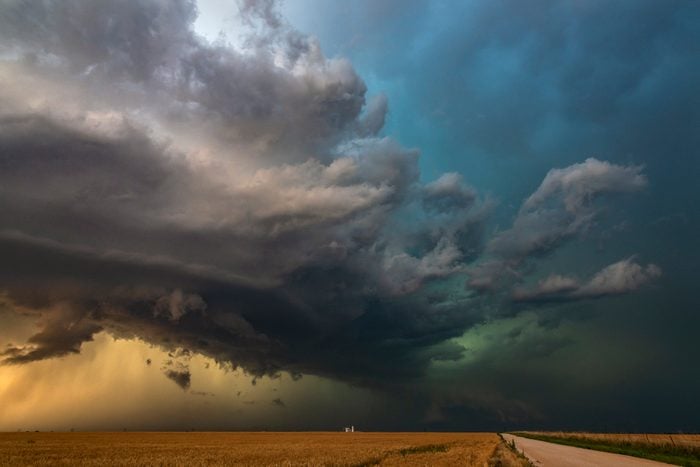
Monitor the sky
Sometimes, a tornado will strike too quickly for an alert to be sent out, or “you may not hear [outdoor tornado sirens] while inside your home,” Fox says. That’s why it’s important to stay vigilant during bad weather. When thunderstorms hit your area, start watching the sky for warning signs that a tornado may be forming or approaching. A dark or green-colored sky, as well as large, dark and low-flying clouds, could be red flags, according to the CDC.

Move or secure household items
After a tornado watch or warning is issued, the CDC recommends taking swift action to reduce hazards both inside and outside your home. For example, try to move heavy furniture like chairs and beds away from windows or other glass like mirrors, as well as place heavy or large objects on lower shelves. You should also consider the items you have outside that could be picked up by strong winds and cause damage—such as your car or outdoor seating—and work to move or secure them the best you can, Fox says.
Now that you know how to prepare for a tornado, read up on how to avoid natural disaster scams once the storm has passed.
Sources:
- NOAA: “Tornado Totals and Related Deaths”
- Stephanie Fox, spokesperson for the American Red Cross
- CDC.gov: “Preparing for a Tornado”
- The Office of Communication at CDC’s National Center for Environmental Health
